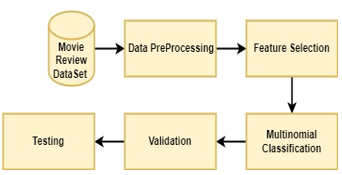Credibility Evaluation of User-generated Content using Novel Multinomial Classification Technique
Main Article Content
Abstract
Awareness about the features of the internet, easy access to data using mobile, and affordable data facilities have caused a lot of traffic on the internet. Digitization came with a lot of opportunities and challenges as well. One of the important advantages of digitization is paperless transactions, and transparency in payment, while data privacy, fake news, and cyber-attacks are the evolving challenges. The extensive use of social media networks and e-commerce websites has caused a lot of user-generated information, misinformation, and disinformation on the Internet. The quality of information depends upon various stages (of information) like generation of information, medium of propagation, and consumption of information. Content being user-generated, information needs a quality assessment before consumption. The loss of information is also necessary to be examined by applying the machine learning approach as the volume of content is extremely huge. This research work focuses on novel multinomial classification (based on multinoulli distribution) techniques to determine the quality of the information in the given content. To evaluate the information content a single algorithm with some processing is not sufficient and various approaches are necessary to evaluate the quality of content. We propose a novel approach to calculate the bias, for which the Machine Learning model will be fitted appropriately to classify the content correctly. As an empirical study, rotten tomatoes’ movie review data set is used to apply the classification techniques. The accuracy of the system is evaluated using the ROC curve, confusion matrix, and MAP.
Article Details
References
Aggarwal, C. (Ed.). (2022). No Title. ACM Trans. Knowl. Discov. Data, 16(1).
Beldar, K. K., Gayakwad, M. D., Bhattacharyya, D., & Kim, T. H. (2016). A comparative analysis on contingence structured data methodologies. International Journal of Software Engineering and Its Applications. https://doi.org/10.14257/ijseia.2016.10.5.03
Blondeel, H., & Bb, K. B. E. (2015). ie r I nf or m at Te nf or m at. 151200710833, 31–33.
Boukhari, M. A., & Gayakwad, M. D. (2019). An experimental technique on fake news detection in online social media. International Journal of Innovative Technology and Exploring Engineering, 8(8 Special Issue 3).
Cai, Y., Zhang, S., Xia, H., Fan, Y., & Zhang, H. (2020). A Privacy-Preserving Scheme for Interactive Messaging Over Online Social Networks. IEEE Internet of Things Journal, 7(8), 6817–6827. https://doi.org/10.1109/JIOT.2020.2986341
Chang, X., & Peng, L. (2022). Intelligent Analysis and Classification of Piano Music Gestures with Multimodal Recordings. Computational Intelligence and Neuroscience, 2022, 8232819. https://doi.org/10.1155/2022/8232819
Flanagin, A. J., Winter, S., & Metzger, M. J. (2020). Making sense of credibility in complex information environments: the role of message sidedness, information source, and thinking styles in credibility evaluation online. Information, Communication & Society, 23(7), 1038–1056. https://doi.org/10.1080/1369118X.2018.1547411
Gayakwad, M. (2020, October 17). Content Modelling for unbiased information analysis. GAYAKWAD, MILIND and Patil, Suhas Dr, “Content Modelling for Unbiased Information Analysis” (2020). Library Philosophy and Practice (e-Journal). 4412. Https://Digitalcommons.Unl.Edu/Libphilprac/4412 . https://digitalcommons.unl.edu/cgi/viewcontent.cgi?article=8397&context=libphilprac
Gayakwad, M., & Patil, S. (2021). Assessment of Source, Medium, and Intercommunication for Assessing the Credibility of Content. 2021 International Conference on Smart Generation Computing, Communication and Networking (SMART GENCON), 1–5. https://doi.org/10.1109/SMARTGENCON51891.2021.9645746
Gehrau, V., Fujarski, S., Lorenz, H., Schieb, C., & Blöbaum, B. (2021). The Impact of Health Information Exposure and Source Credibility on COVID-19 Vaccination Intention in Germany. International Journal of Environmental Research and Public Health, 18(9). https://doi.org/10.3390/ijerph18094678
Hu, S., Kumar, A., Al-Turjman, F., Gupta, S., Seth, S., & Shubham. (2020). Reviewer Credibility and Sentiment Analysis Based User Profile Modelling for Online Product Recommendation. IEEE Access, 8, 26172–26189. https://doi.org/10.1109/ACCESS.2020.2971087
ICMLSC 2022: 2022 The 6th International Conference on Machine Learning and Soft Computing. (2022).
Jha, A., Dave, M., & Madan, S. (2019). Comparison of Binary Class and Multi-Class Classifier Using Different Data Mining Classification Techniques. SSRN Electronic Journal, 894–903. https://doi.org/10.2139/ssrn.3464211
Kakol, M., Nielek, R., & Wierzbicki, A. (2017). Understanding and predicting Web content credibility using the Content Credibility Corpus. Information Processing & Management, 53(5), 1043–1061. https://doi.org/https://doi.org/10.1016/j.ipm.2017.04.003
Kaliyar, R. K., Goswami, A., & Narang, P. (2021). FakeBERT: Fake news detection in social media with a BERT-based deep learning approach. Multimedia Tools and Applications, 80(8), 11765–11788. https://doi.org/10.1007/s11042-020-10183-2
Li, H. (2020). Communication for Coproduction: Increasing Information Credibility to Fight the Coronavirus. American Review of Public Administration, 50(6–7), 692–697. https://doi.org/10.1177/0275074020942104
Mahmood, S., Ghani, A., Daud, A., & Shamshirband, S. (2019). Reputation-Based Approach Toward Web Content Credibility Analysis. IEEE Access, 7, 139957–139969. https://doi.org/10.1109/ACCESS.2019.2943747
Maurya Marutiand Gayakwad, M. (2020). People, Technologies, and Organizations Interactions in a Social Commerce Era. In T. and I. S. M. S. and W. H. Pandian A.Pasumponand Senjyu (Ed.), Proceeding of the International Conference on Computer Networks, Big Data and IoT (ICCBI - 2018) (pp. 836–849). Springer International Publishing.
Purba, K. R., Asirvatham, D., & Murugesan, R. K. (2021). Instagram post popularity trend analysis and prediction using hashtag, image assessment, and user history features. International Arab Journal of Information Technology, 18(1), 85–94. https://doi.org/10.34028/iajit/18/1/10
Putri Ghaisani, A., Munajat, Q., & Handayani, P. W. (2018). Information credibility factors on information sharing activites in social media. Proceedings of the 2nd International Conference on Informatics and Computing, ICIC 2017, 2018-January, 1–5. https://doi.org/10.1109/IAC.2017.8280655
Shah, A. A., Ravana, S. D., Hamid, S., & Ismail, M. A. (2020). Web Pages Credibility Scores for Improving Accuracy of Answers in Web-Based Question Answering Systems. IEEE Access, 8, 141456–141471. https://doi.org/10.1109/ACCESS.2020.3013411
Silva-Palacios, D., Ferri, C., & Ramírez-Quintana, M. J. (2017). Improving Performance of Multiclass Classification by Inducing Class Hierarchies. Procedia Computer Science, 108, 1692–1701. https://doi.org/https://doi.org/10.1016/j.procs.2017.05.218
Tully, M., Vraga, E. K., & Bode, L. (2020). Designing and Testing News Literacy Messages for Social Media. Mass Communication and Society, 23(1), 22–46. https://doi.org/10.1080/15205436.2019.1604970
Verma, P. K., Agrawal, P., Amorim, I., & Prodan, R. (2021). WELFake: Word Embedding over Linguistic Features for Fake News Detection. IEEE Transactions on Computational Social Systems, 8(4), 881–893. https://doi.org/10.1109/TCSS.2021.3068519
Yao, J., Xing, L., & Wu, H. (2022). A Microblog Content Credibility Evaluation Model Based on the Influence of Sentiment Polarity. Mobile Information Systems, 2022, 8983534. https://doi.org/10.1155/2022/8983534
Zheng, Q., & Qu, S. (2020). Credibility Assessment of Mobile Social Networking Users Based on Relationship and Information Interactions: Evidence From China. IEEE Access, 8, 99519–99527. https://doi.org/10.1109/ACCESS.2020.2996682
Zhou, C., Li, K., & Lu, Y. (2021). Linguistic Characteristics and the Dissemination of Misinformation in Social Media: The Moderating Effect of Information Richness. Inf. Process. Manage., 58(6). https://doi.org/10.1016/j.ipm.2021.102679
Pande, S. D., Jadhav, P. P., Joshi, R., Sawant, A. D., Muddebihalkar, V., Rathod, S., Gurav, M. N., & Das S., “Digitization of handwritten Devanagari text using CNN transfer learning – A better customer service support”, Neuroscience Informatics, Volume 2, Issue 3, 2022.
Pande S.D., Chetty M.S.R. (2021) Fast Medicinal Leaf Retrieval Using CapsNet. In: Bhattacharyya S., Nayak J., Prakash K.B., Naik B., Abraham A. (eds) International Conference on Intelligent and Smart Computing in Data Analytics. Advances in Intelligent Systems and Computing, vol 1312.
Pande S.D., Chetty M.S.R., “Linear Bezier Curve Geometrical Feature Descriptor for Image Recognition”, Recent Advances in Computer Science and Communications, Vol. 13, No. 5, pp. 930-941, 2020.

